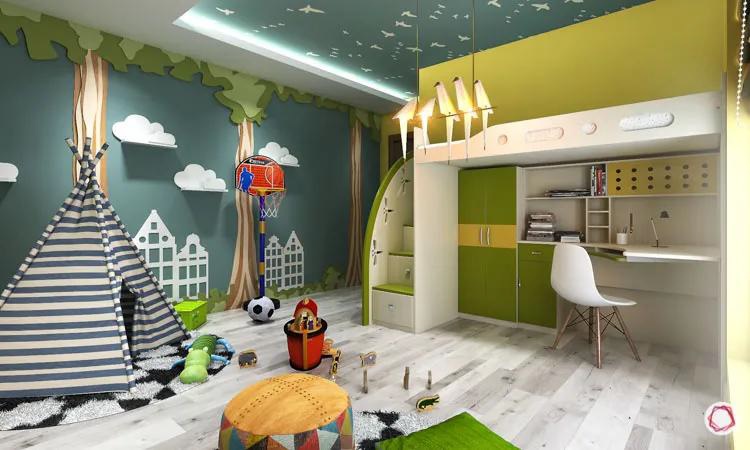For a person like you or me, planning to build a dream home or design your workplace, or maybe even renovate an existing building – just the thought of who to approach to get the job done takes the life out of us. So, we go around asking people for suggestions. By the end of this enquiry we are left with this long list of people which seems to only make things more tantalizing.

Among the names you are sure to find- The Architect. But why was an Architect suggested? And why even approach one in the first place? If you ask any architect, this would probably be the response: –
Team-Architects: “Why approach an architect? Well, let’s get straight to the point.”
Simply put, an Architect is like a chef – he doesn’t merely cook food. He produces artful meals that enhances the lives of many.
An architect also –
-
Listens to the client’s aspirations, expectations and needs.
-
Is up-to-date on current trends in the practice and those by-gone.
-
Is aware of various construction techniques and materials.
-
Has a vast understanding on the nature of spaces in a building. (emotions within the space,use and user-oriented, usability, functionality)
-
Helps to provide suitable aesthetics where and when required.
-
Exercises creativity.
-
Works in systematic stages and keeps you updated on the happenings of the project.
-
Optimizes and articulates spaces.
-
Creates sustainable, energy- efficient and eco-friendly architecture.
-
Involves in place-making(public spaces) and government project.
-
Ensures your project is 100% foolproof.
Not convinced? Here are few more arguments to reinforce ourstand:
Architecture has seen an array of styles over the centuries. From Neo-Classical to Minimalistic and from Roman to Dravidian. No two are the same. And when it comes to selecting a style for your home, the options are many. Of course, it’s not necessary that you must select one or go hunting for one. But even if you are undecided and don’t expect any particular style consciously, you unconsciously have certain expectations and ideas for your future home. These in turn form the “style” of your building; the elements that define and enrich your home. So,how do you decide on a style for your dream home?
Simple…approach an Architect, or better still your local architect. He will give you suggestions, help you decide on that one style, dissuade you from choosing a style that is inappropriate or centuries too late for today. Added to these, he knows the working of your locality better than anyone else. But of course, this is merely a slight upper hand that the local architect has against an “outsider” architect.
The one thing that an architect is good at above anything else is their intake of knowledge on a daily basis. They don’t identify with the notion ‘too much information is too much information’. In fact, this helps him stay at the top of his game and a cut above the rest.

We Do Need Architects
Equipped with this information, you are rest assured that approaching an architect is the way to go. The general misconception is that architects merely beautify buildings, work on facades or merely hold authority to provide a building with the stamp of approval. But as already asserted above, that is clearly not the case.
The sudden explosion of schools of Architecture (especially here in Chennai) over the past decade is a sign that the industry has been given a chance, not just by the elite in the society but also the middle class, looking to augment their lives and lifestyles. But that also brings up the issue of legitimacy and uncertainty. “If there are so many more schools than a decade ago, won’t that reduce that quality of architects produced from these school?” A typical case of ‘Engineering College Syndrome’. “How do we put our trust into the hands of any architect when there are just too many schools of architecture today? Because as they say, too many cooks spoil the broth.”
But this, my friends, is a broth with an age-old recipe. You cannot alter the original recipe and must serve it as it is. But you can always add to it! And there will always be people bringing in their own twist to the original recipe. So, each architect will be able to give out something that may be partially tested but is also new.
So, it’s two birds in one stone for you- satisfaction as well as the assurance of quality work. Make that three birds: experience. An architect gains experience from the time he trains in architecture school, through the training he undergoes as a trainee, up until the moment you meet him. As already mentioned above, the architect never ceases to devour information. This attribute enables him to interact with people, materials and techniques- in short, garnering more experience. Every interaction made is a new lesson learned and a point on the experience scorecard.
Without the architect, you could build a house, not a home. Team-Architects rest their case.
Ok. Now that you have decided to approach an architect, how do you go about things?
1. The Right Approach
Every architect has his own style.Each has his own style of working, designing, presentation and execution.Be it in certain elements recurring in all his works or the style of architecture that he pursues (modernistic, classical, minimalistic, etc.) Understanding this is crucial as your vision for the project should align with that of the architect’s, i.e., his style of work should coincide with what you want. So, make sure your project is something that the architect you have chosen can work on without any major hassle. For instance, if you are looking for an Architect to plan your independent villa with a modern appearance, you cannot approach one who works only on Indian traditional architecture. As the saying goes, wear the shoe that fits.
So, do your research. Just like how you would decide on a college or accommodation. Look up their websites, see the type and quality of work they do, make enquiries from their clients or anyone else who may know about them. Find out if the architect has experience in a project similar to the one you have in mind and also if he dutifully complies with the deadlines. Finding the right architect for yourself is a very important step, as the choice you make will decide the rest of the project.
Also, there’s this: scope of work. Clearly decide what it is you want your architect to do. Whether it is just the planning of your building or combined with the interiors or oversee the construction part too. Knowing this, the architect can work on details like project duration, fees,requirements, etc.
2. Understanding What Will Go Down
The architect is like your doctor. You have a problem you wish to be solved. You go to him.
- The doctor makes an enquiry and conducts a check-up (your client meeting)
- Studies your symptoms (analyses your requirements, site conditions and neighbourhood)
- Writes down a prescription (the project design and solution though drawing and models)
- Asks you to check back after a given date (follow up meets and other services like construction if included)
- Your problem is solved and you are healthy (project completion and satisfaction)
3. The Meeting

Architects can be intimidating. They may always seem to have the upper hand in the conversation, but that’s because it is their job – to ask questions. For any architect, the first meet is crucial. The same goes for the party on the opposite side of the desk.
The architect tries to understand your needs and as clients we must in turn help him do so in any way we can. If you are a family-man looking to build a family home, then take your family along for the meeting. That way everyone can give in their inputs which will help the architect customize the house for the whole family.
The first thing you will have to bear in mind is that: an architect is always listening. Meaning, he listens to what you have to say– what you want, why you want it, where you want it, how you want it and when.Just how we have quoted Robert A.M. Sterns on our website:
“The dialogue between the client and the architect is about as intimate as any conversation you can have, because when you are talking about building a house you are talking about your dreams.”


So, much like the doctor, the architect must be fed with sufficient info on the project– about the project, location, locality, stakeholders, budget, ideas, completion date, etc.
And as in the medical industry, “self-medication” has been deemed dangerous, so it is with the field of architecture too. Well, ‘dangerous’ is quite a stretch here, but yes, it is uncalled for.
You would never question the doctor on the medication he prescribes, or question the car mechanic on how he should fix your car. Then why question the architect when he is merely trying help you?
After you’ve given your input, the architect will in turn take care of the ‘how to do it’ part. As a client, you should then expect his feedback, opinion and suggestion. That is, whether the project is feasible, whether the plot at hand is adequate for all your requirements. Because sometimes, as disheartening as it may be, your dreams and aspirations when churned into ‘reality mode’ by any architect may not always be exactly the way you would have initially wanted it to have been.

Now, this is not due to the incompetency of the architect. But rather that he/she is able to estimate whether what you need tallies up with your budget, plot size and locality. If it does not tally up, the architect will always come up with a workable solution for the two of you to work on.
Be passionate
Show the architect that you are really passionate about the project. This is your dreams that you want to see realized. You are probably putting your lifesavings into this one. Convince him to take up your project and explain why it is so important to you.
Have clarity.
That is, clarity in the ‘what you want’ part. You may be uncertain in the details such as what roofing your building ought to have or the type of staircase most appropriate. No worries. That is a job for the architect. He will provide suggestions and ideas to help you out by means of initial sketches, models, picture references, schemes drawings. All you need to provide him with is the expectation and vision of the project and your best idea on how you want it to look like.The final form and components of the building will fall into place after a couple of revisions for, no one can get it right the first time. You will know this as the project progresses.
Also, bear in mind, the architect is human too. So, a fair completion date or deadline that the two of you agree upon should be set, giving him the time to give in his best, which is what you want anyway.
4. The Follow-Up
Once the meeting has concluded and “the deal is struck”, ensure that you stay updated on the progress made on the project. Leave a friendly message to their phone, or give a call on a regular (and not daily) basis for an update. Visit the work site whenever possible. Also, pool in wherever and whenever you can.Your architect may be the one planning and making most of the decisions throughout the project, but you are the one making the final decisions. So, carefully regard the decisions you make and if you are unable to make one, the architect will always be willing to help.
Follow up ideas from your side can be shared with your architect, the earlier the better. That way they have a good idea of how to go about these ideas. If the architect is waiting on you to review a set of drawings or certain details of a project, comply as soon as possible. This will reduce the project time considerably and help progress the project. Win-win on both ends!
5. Be Bonnie and Clyde
Every successful project has always had one major secret that is not really a secret: a healthy Architect-Client relationship. Good teamwork between the two is the first step to cementing success for a project. This holds good for both parties. However short the duration of the project is or however small the scope of work is, unless the client and the architect are in good terms with each other, the future of the project is uncertain. Moreover, future endeavours may be most likely non-existent.
On the other hand, if you and the architect are on good terms, exchange ideas, thoughts and pleasantries, then, these seal the advent of a successful project.
6. Ensure Satisfaction
Ensure that the materials being used or the spaces being designed of the quality and appearance that you are expecting is what you had in mind. But whatever the case, make sure that you are satisfied as the planning progresses and on completion of the project.
Related Articles

Tropical Architecture Series – Blog 1
Human life as we know it was created 200,000 years ago. Despite being vulnerable, we humans have conquered swathes of territory, like no other species before us. After 180,000 years of nomadic living, thanks to a more clement climate, humans settled down in...

Divvying Living spaces : How the Pandemic Re-Shuffled Our Homes
by Ramya Shree K.K.Without a doubt, the COVID-19 pandemic has changed how we live. With most people around the world spending significantly more time in their homes than ever before, people are devoting more time and energy into finding more uses for their living...

Does everyone need an architect?
There is a myth that an architect will work for people with more land and will charge an exquisite amount of money in designing them. Few architects of old generations sometimes design for people with more than a particular level area. Nowadays, all architects...
